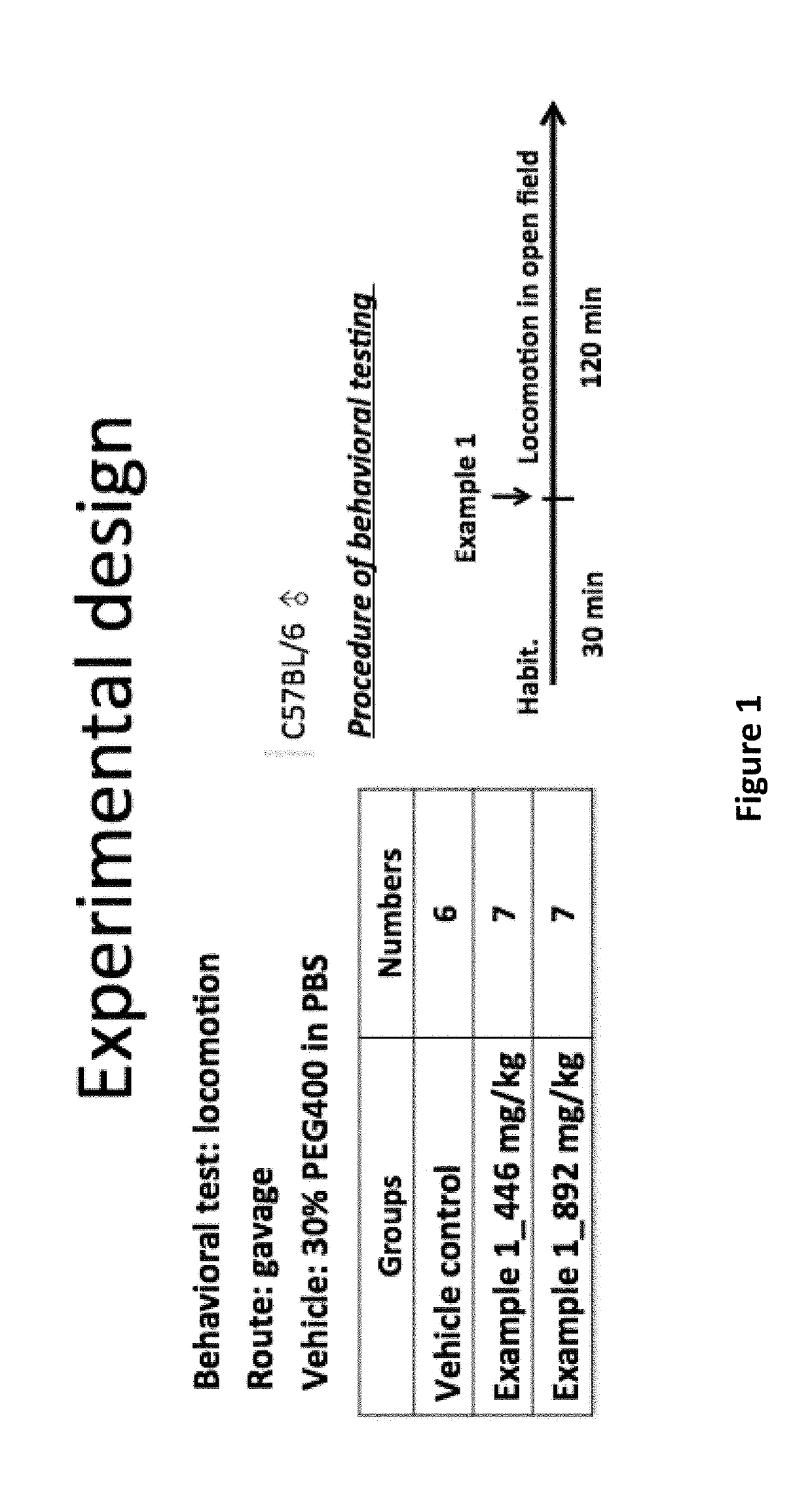D-amino acid oxidase inhibitors and therapeutic uses thereof
a technology of d-amino acid and oxidase inhibitor, which is applied in the field ofdamino acid oxidase inhibitors, can solve the problems of lagged effectiveness of cns disorders treatment, achieve the effects of reducing or avoiding symptoms, signs or causes of the condition, and reducing or minimizing one or more symptoms
- Summary
- Abstract
- Description
- Claims
- Application Information
AI Technical Summary
Benefits of technology
Problems solved by technology
Method used
Image
Examples
example 1
of 6-(hydroxymethyl)-4-oxo-4H-pyran-3-yl 1H-pyrrole-2-carboxylate (1)
[0132]
6-(Hydroxymethyl)-4-oxo-4H-pyran-3-yl 1H-pyrrole-2-carboxylate (1)
[0133]To a stirred suspension of pyrrole-2-carboxylic acid (3.0 g, 27.1 mmol) in dichloromethane (18 mL) at room temperature (RT) was added oxalyl chloride (8.5 mL, 99.0 mmol) in one portion. After 2-3 h, dichloromethane and oxalyl chloride were removed under reduced pressure. Benzene was added to the residue and removed under reduced pressure. Dichloromethane (20 mL) was added to the residue and the resulting solution was added dropwise into a solution of 5-hydroxy-2-(hydroxymethyl)-4H-pyran-4-one (5.8 g, 40.5 mmol) in pyridine (20 mL) at 0° C. for 2 h. The mixture was allowed to warm to RT and stirred overnight. Dichloromethane was removed by evaporation under reduced pressure and the residue was diluted with equivalent volume of water. The precipitate was filtered off, and the filtrate was poured into 1 L of water then kept at 4° C. overnigh...
example 2
of 6-(hydroxymethyl)-4-oxo-4H-pyran-3-yl 4-(4-chlorophenethyl)-1H-pyrrole-2-carboxylate (5)
[0134]
Ethyl 4-(2-(4-chlorophenyl) acetyl)-1H-pyrrole-2-carboxylate (2)
[0135]To a solution of 4-chlorobenzeneacetyl chloride (54.0 g, 300.0 mmol) in dichloromethane (500 mL) was added aluminum chloride (38.0 g, 280.0 mmol) at 0° C. under N2. Then a solution of ethylpyrrole-2-carboxylate (20.0 g, 140.0 mmol) in dichloromethane (200 mL) was added dropwise to the mixture at 0° C. The reaction mixture was stirred at RT for 16 h. After the reaction was completed, the mixture was quenched by saturated NH4Cl(aq). The mixture was extracted with ethyl acetate, washed with brine, dried over anhydrous sodium sulfate and filtered. The filtrate was evaporated in vacuo. The residue was purified by flash column chromatography with 0-30% ethyl acetate in petroleum ether to afford ethyl 4-(2-(4-chlorophenyl) acetyl)-1H-pyrrole-2-carboxylate (2) as a brown solid (23.0 g, 55%). ESI-MS, m / z=292 [M+H]+.
Ethyl 4-(4-c...
example 3
of 6-(hydroxymethyl)-4-oxo-4H-pyran-3-yl 4H-furo[3, 2-b] pyrrole-5-carboxylate (9)
[0139]
Ethyl (Z)-2-azido-3 (furan-2-yl) acrylate (6)
[0140]To a stirring solution of ethanol (200 mL) was added sodium (8.3 g, 360.9 mmol) under the ice-bath, and then ethyl 2-azidoacetate (44.8 g, 347.0 mmol) and furan-2-carbaldehyde (28.8 g, 299.7 mmol) was added slowly. The reaction mixture was stirred at RT for 3 h before quenched by the addition of saturated NH4Cl(aq) (30 mL). The resulting solution was extracted with ethyl acetate (2×100 mL) and the organic layers combined. Then the organic layer was washed with brine (50 mL). The mixture was dried over anhydrous sodium sulfate and filtered. The residue was purified by flash column chromatography with ethyl acetate / petroleum ether (1:9) to afford ethyl (Z)-2-azido-3 (furan-2-yl) acrylate (6) as a yellow oil (10.0 g, 16%). 1H NMR (CDCl3, 300 MHz) δ 7.54-7.46 (m, 1H), 7.11 (d, J=3.7 Hz, 1H), 6.88 (s, 1H), 6.54 (m, 1H), 4.36 (q, J=7.1 Hz, 2H), 1.39 (t...
PUM
| Property | Measurement | Unit |
|---|---|---|
| Composition | aaaaa | aaaaa |
Abstract
Description
Claims
Application Information
 Login to View More
Login to View More - R&D
- Intellectual Property
- Life Sciences
- Materials
- Tech Scout
- Unparalleled Data Quality
- Higher Quality Content
- 60% Fewer Hallucinations
Browse by: Latest US Patents, China's latest patents, Technical Efficacy Thesaurus, Application Domain, Technology Topic, Popular Technical Reports.
© 2025 PatSnap. All rights reserved.Legal|Privacy policy|Modern Slavery Act Transparency Statement|Sitemap|About US| Contact US: help@patsnap.com



